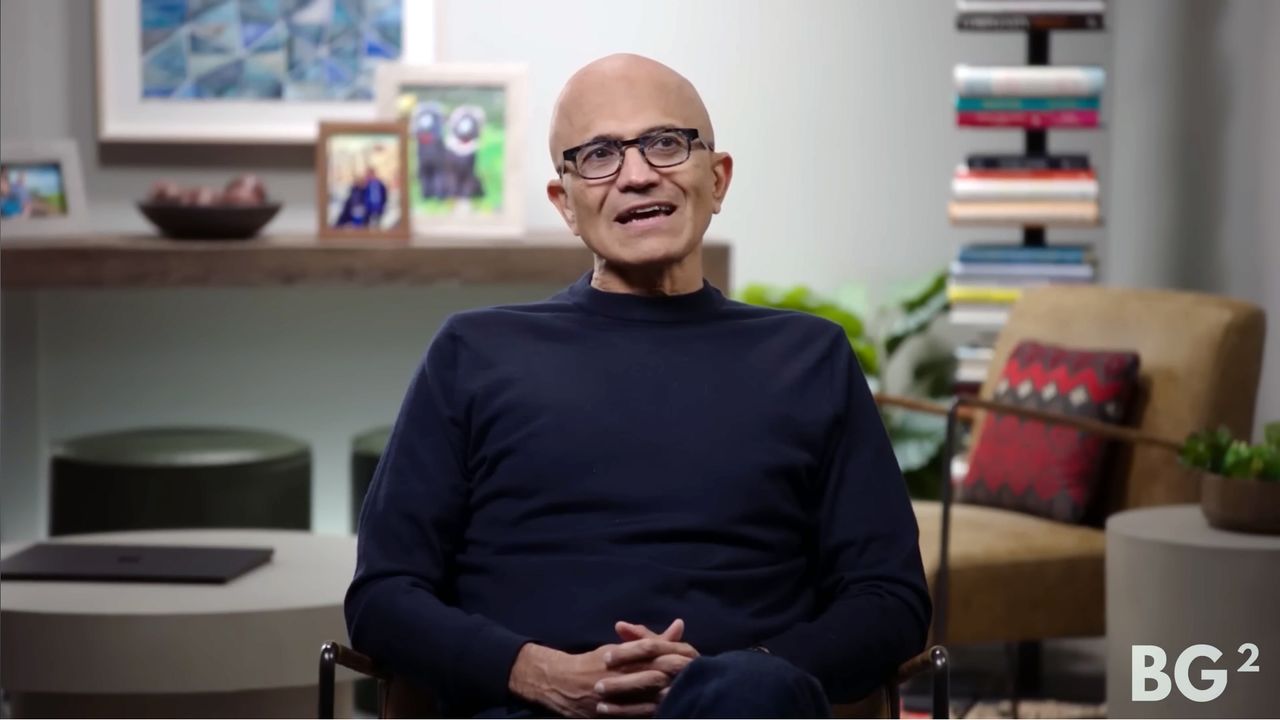
Microsoft CEO Satya Nadella said during an interview alongside OpenAI CEO Sam Altman that the problem in the AI industry is not an excess supply of compute, but rather a lack of power to accommodate all those GPUs. In fact, Nadella said that the company currently has a problem of not having enough power to plug in some of the AI GPUs the firm has in inventory. He said this on YouTube in response to Brad Gerstner, the host of Bg2 Pod, when asked whether Nadella and Altman agreed with Nvidia CEO Jensen Huang, who said there is no chance of a compute glut in the next two to three years.
“I think the cycles of demand and supply in this particular case, you can’t really predict, right? The point is: what’s the secular trend? The secular trend is what Sam (OpenAI CEO) said, which is, at the end of the day, because quite frankly, the biggest issue we are now having is not a compute glut, but it’s power — it’s sort of the ability to get the builds done fast enough close to power,” Satya said in the podcast. “So, if you can’t do that, you may actually have a bunch of chips sitting in inventory that I can’t plug in. In fact, that is my problem today. It’s not a supply issue of chips; it’s actually the fact that I don’t have warm shells to plug into.” [Emphasis added]
Nadella's mention of 'shells' refers to a data center shell, which is effectively an empty building with all of the necessary ingredients, such as power and water, needed to immediately begin production.
AI’s power consumption has been a topic many experts have discussed since last year. This came to the forefront as soon as Nvidia fixed the GPU shortage, and many tech companies are now investing in research in small modular nuclear reactors to help scale their power sources as they build increasingly large data centers.
This has already caused consumer energy bills to skyrocket, showing how the AI infrastructure being built out is negatively affecting the average American. OpenAI has even called on the federal government to build 100 gigawatts of power generation annually, saying that it’s a strategic asset in the U.S.’s push for supremacy in its AI race with China. This comes after some experts said Beijing is miles ahead in electricity supply due to its massive investments in hydropower and nuclear power.
Aside from the lack of power, they also discussed the possibility of more advanced consumer hardware hitting the market. “Someday, we will make a[n] incredible consumer device that can run a GPT-5 or GPT-6-capable model completely locally at a low power draw — and this is like so hard to wrap my head around,” Altman said. Gerstner then commented, “That will be incredible, and that’s the type of thing that scares some of the people who are building, obviously, these large, centralized compute stacks.”
This highlights another risk that companies must bear as they bet billions of dollars on massive AI data centers. While you would still need the infrastructure to train new models, the data center demand that many estimate will come from the widespread use of AI might not materialize if semiconductor advancements enable us to run them locally.
This could hasten the popping of the AI bubble, which some experts like Pat Gelsinger say is still several years away. But if and when that happens, we will be in for a shock as even non-tech companies would be hit by this collapse, exposing nearly $20 trillion in market cap.

Follow Tom's Hardware on Google News, or add us as a preferred source, to get our latest news, analysis, & reviews in your feeds.







